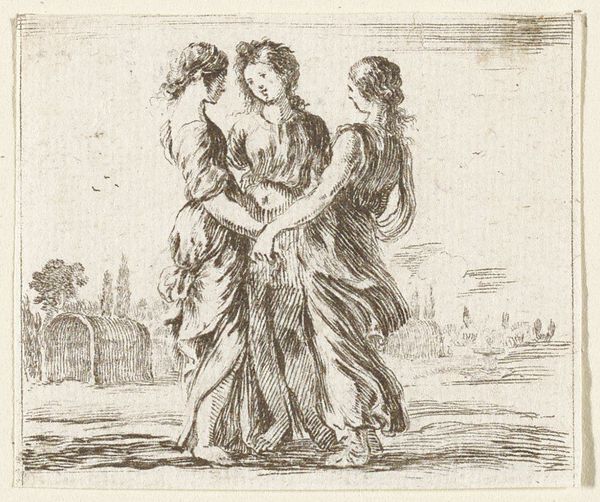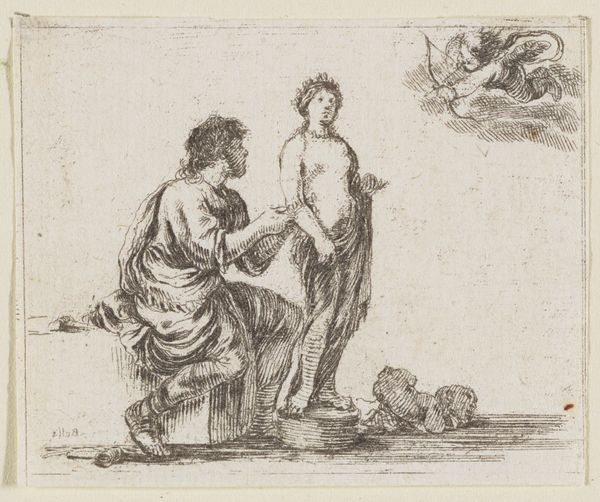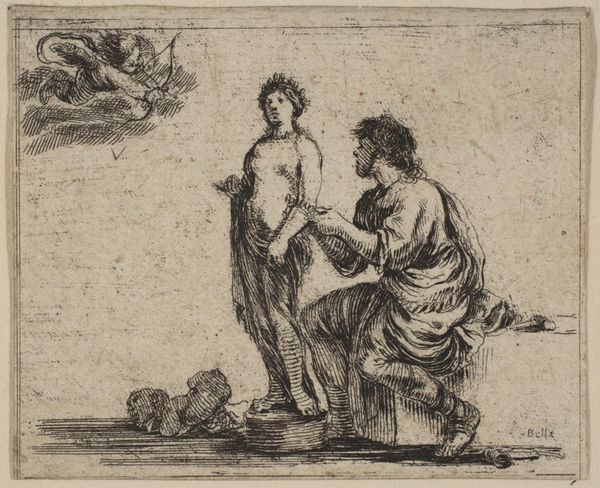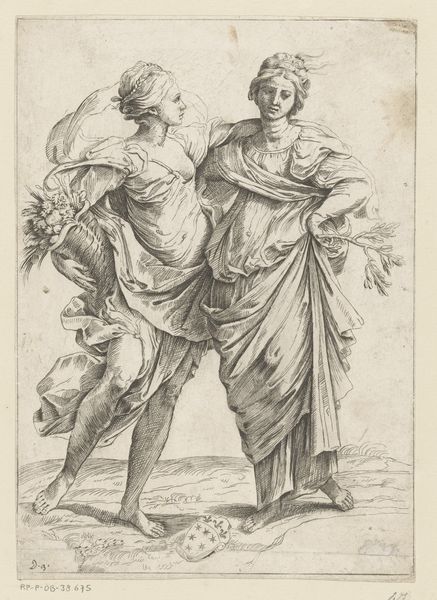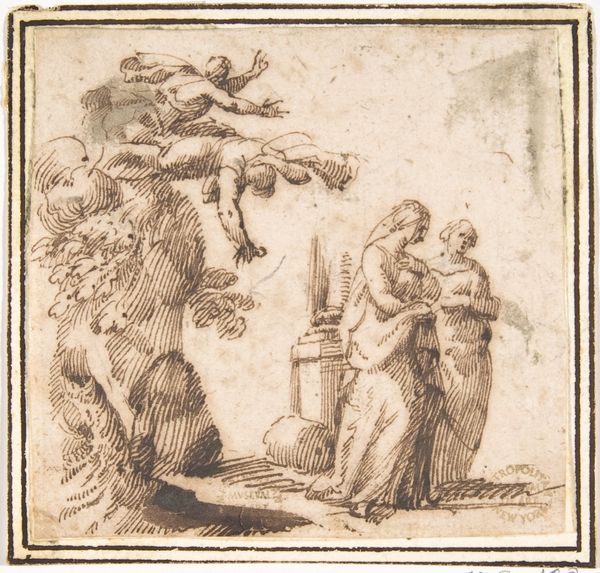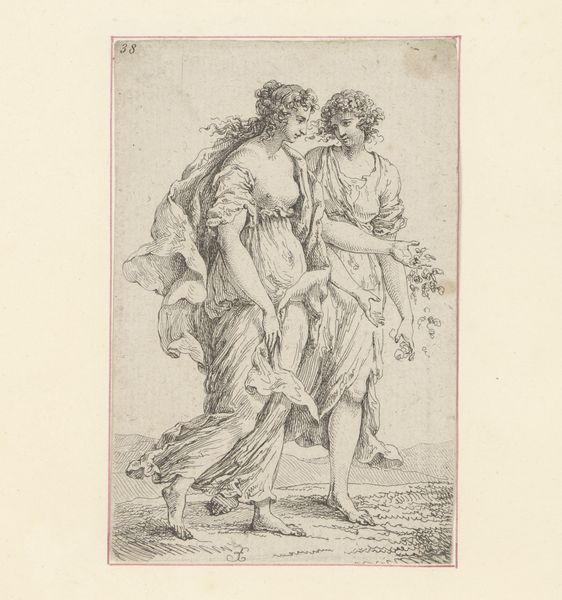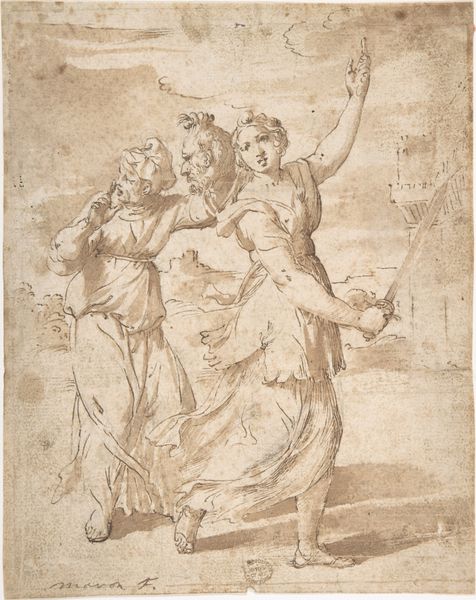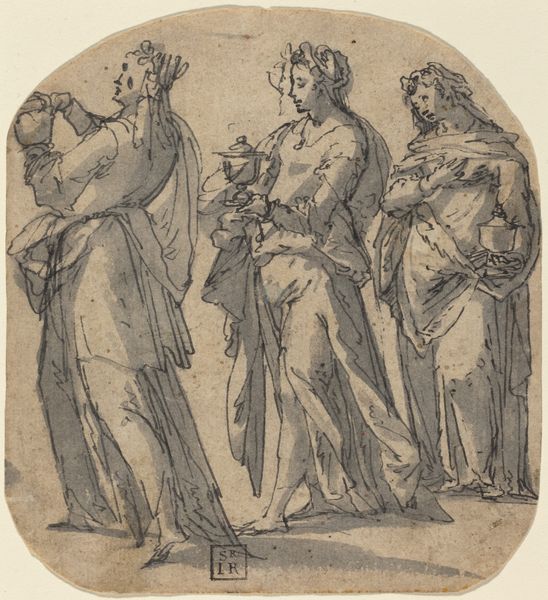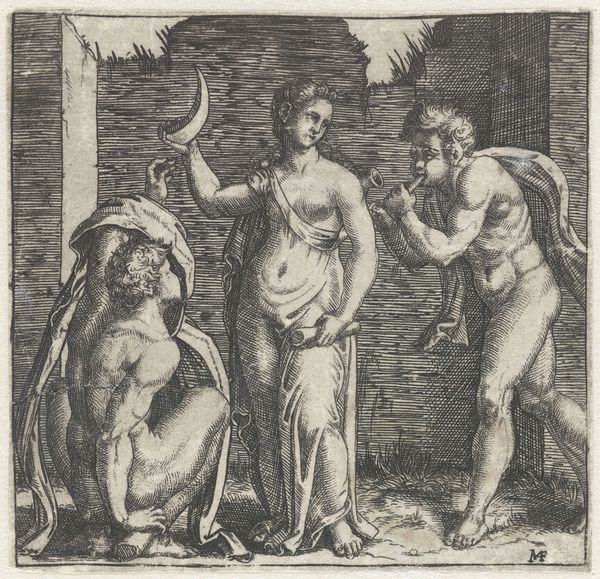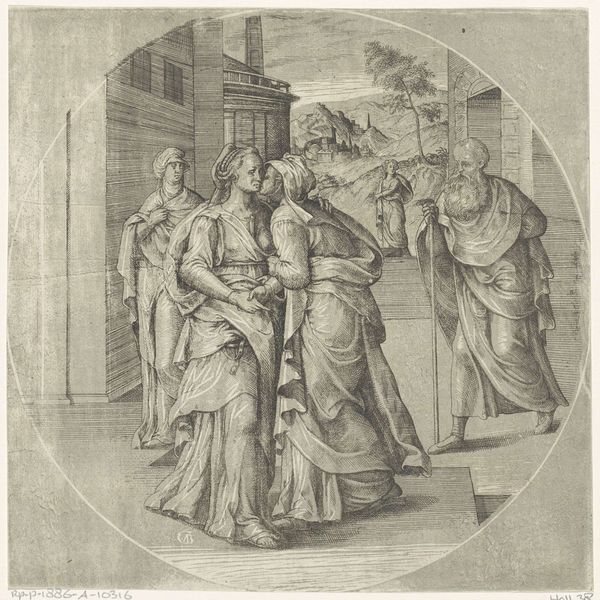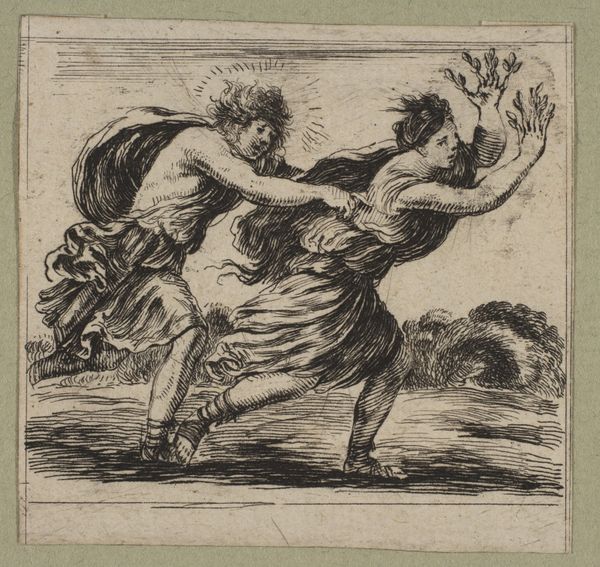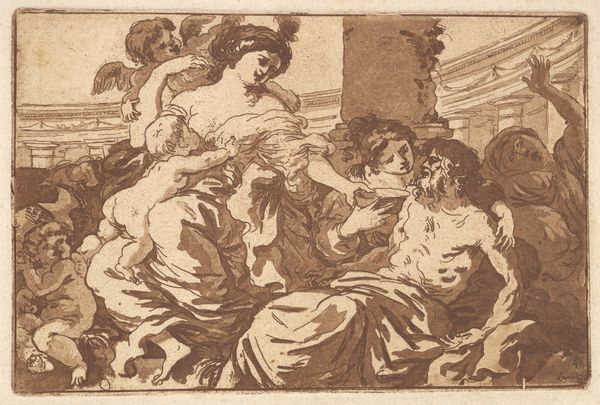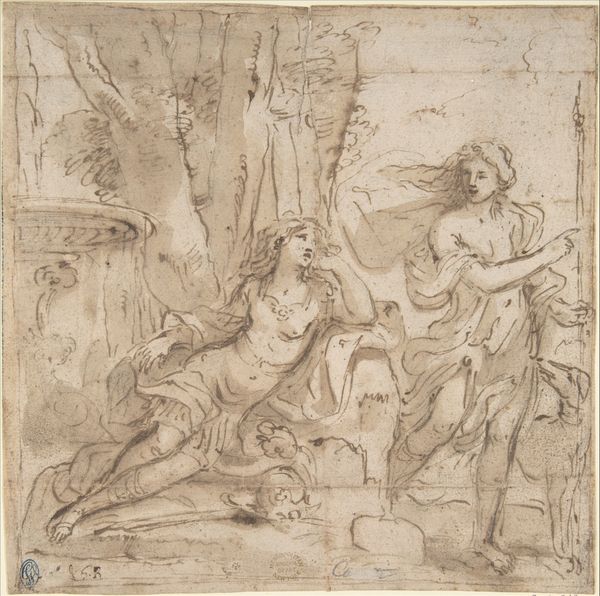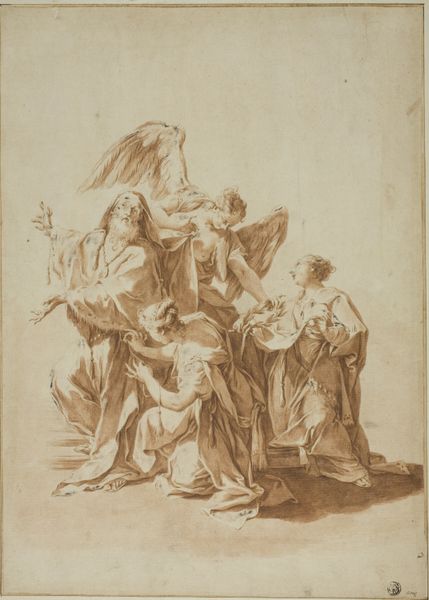
The three graces, from 'Game of Mythology' (Jeu de la Mythologie) 1644
0:00
0:00
drawing, print, etching
#
drawing
#
allegory
#
baroque
# print
#
etching
#
figuration
#
history-painting
Dimensions: Sheet: 2 1/8 × 2 3/16 in. (5.4 × 5.6 cm)
Copyright: Public Domain
Curator: Let's discuss this etching, "The Three Graces" by Stefano della Bella, dating from 1644. It is currently held in the collection of the Metropolitan Museum. Editor: It’s surprisingly intimate for an allegory, almost domestic. I'm immediately drawn to the way the etched lines capture the texture of the women’s drapery. You can almost feel the weight of the fabric. Curator: Indeed. The composition centers on the rhythmic arrangement of the three figures, their forms unified through linked hands. It echoes classical ideals, emphasizing beauty and harmony through line and proportion. Notice the delicate interplay between light and shadow that the artist achieves. Editor: And the social implications of printmaking itself cannot be ignored. The way the work is produced, an etching… this medium allowed for wider circulation and access compared to painting at that time, potentially influencing fashion and popular taste beyond the aristocratic circle. Curator: A salient point. Della Bella masterfully manipulates the burin to create gradations in tone, emphasizing spatial depth and the illusion of volume. The lines establish not only the texture of garments, but their shapes. The forms evoke a classical, idealized feminine ideal, consistent with Baroque aesthetics. Editor: I find myself questioning whether it simply celebrates idealized beauty, or if it perhaps embodies a material celebration of textile production itself? Consider the skill and resources that go into such beautiful and elegant drapery as expressed through lines. Is Della Bella simply depicting grace or also, subtly, craftsmanship? Curator: I perceive the work as operating primarily on an allegorical plane. These women symbolize beauty, joy, and prosperity – timeless ideals independent of any one craft. The surrounding landscape acts merely as a serene backdrop, allowing the figures themselves to hold our attention. Editor: Fair enough. But what I see is how the etching process is foregrounded in this historical period and continues in the present—emphasizing labor, artistic intention, and broader social distribution and value of materials that reach diverse audiences through image making. Curator: Thank you for illuminating these often overlooked perspectives. Editor: A pleasure. Artworks always hold more than meets the eye.
Comments
No comments
Be the first to comment and join the conversation on the ultimate creative platform.
